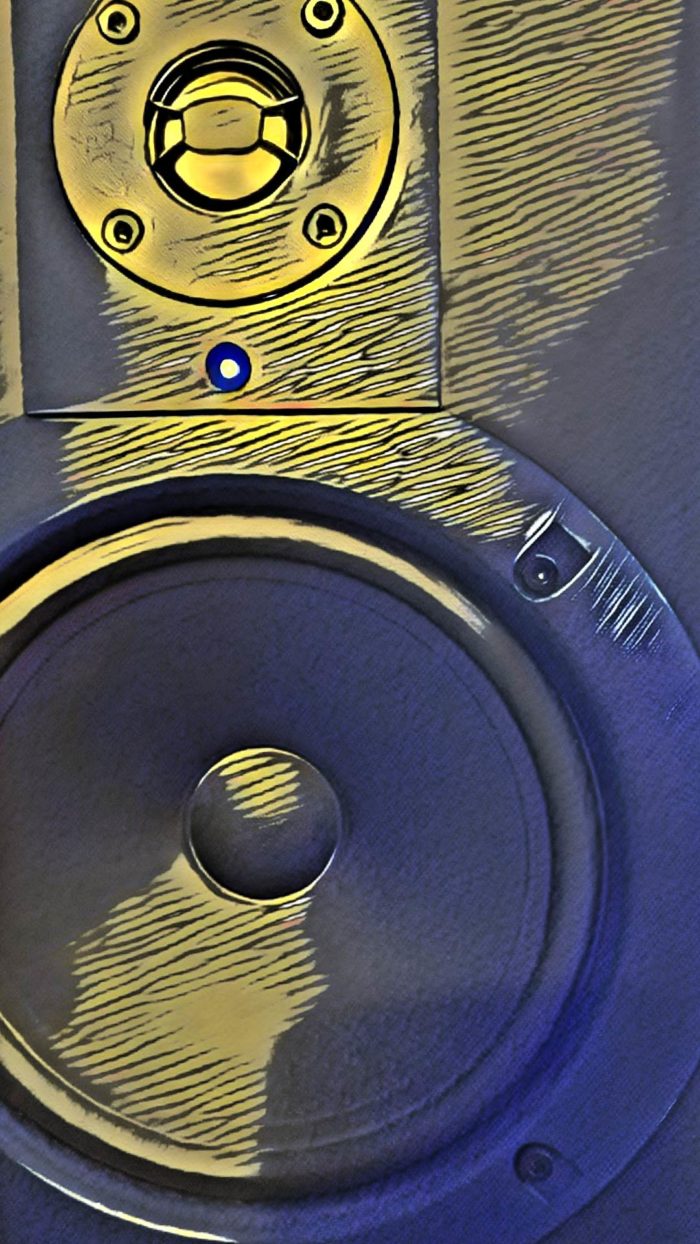I encourage live-audio humans to spend lots of time listening to studio monitors.
Please Remember:
The opinions expressed are mine only. These opinions do not necessarily reflect anybody else’s opinions. I do not own, operate, manage, or represent any band, venue, or company that I talk about, unless explicitly noted.

 Want to use this image for something else? Great! Click it for the link to a high-res or resolution-independent version.
Want to use this image for something else? Great! Click it for the link to a high-res or resolution-independent version.Do you work in live-audio? Are you new to the field? An old hand? Somewhere in between?
I want to encourage you to do something.
I want you to get yourself a pair of basically decent studio monitors. They shouldn’t be huge, or expensive. They just have to be basically flat in terms of their magnitude response. Do NOT add a subwoofer. You don’t need LF drivers bigger than 8″ – anything advertised to play down to about 40 Hz or 50 Hz is probably fine.
I want you to run them as “flat” as possible. I want you to do as much listening with them as possible. Play your favorite music through them. Watch YouTube videos with them passing the audio. When you play computer games, let the monitors make all the noises.
I want you to get used to how they sound.
Oh, and try to tune your car stereo to sound like your studio monitors. If you can only do so coarsely, still do so.
Why?
Because I think it’s very helpful to “calibrate” yourself to un-hyped audio.
A real problem in live music is the tendency to try to make everything “super enhanced.” It’s the idea that loud, deep bass and razor-sharp HF information are the keys to good sound. There’s a problem, though. The extreme ends of the audible spectrum actually aren’t that helpful in concert audio. They are nice to have available, of course. The very best systems can reproduce all (or almost all) of the audible range at high volume, with very low distortion. The issue is over-emphasis. The sacrifice of the absolutely critical midrange – where almost all the musical information actually lives – on the altar of being impressive for 10 seconds.
I’m convinced that part of what drives a tendency to dial up “hyped” audio in a live situation is audio humans listening to similar tonalities when they’re off-duty. They build a recreational system that produces booming bass and slashing treble, yank the midrange down, and get used to that as being “right.” Then, when they’re louderizing noises for a real band in a real room, they try to get the same effect at large scale. This eats power at an incredible rate (especially the low-end), and greatly reduces the ability of the different musical parts to take their appointed place in the mix. If everything gets homogenized into a collection of crispy thuds, the chance of distinctly hearing everything drops like a bag of rocks tied to an even bigger rock that’s been thrown off a cliff made of other rocks.
But it does sound cool!
At first.
A few minutes in, especially at high volume, and the coolness gives way to fatigue.
In my mind, it’s a far better approach to try to get the midrange, or about 100 Hz to 5 kHz, really worked out as well as possible first. Then, you can start thinking about where you are with the four octaves on the top and bottom, and what’s appropriate to do there.
In my opinion, “natural” is actually much more impressive than “impressive,” especially when you don’t have massive reserves of output available. Getting a handle on what’s truly natural is much easier when that kind of sonic experience is what you’ve trained yourself to think of as normal and correct.
So get yourself some studio monitors, and make them your new reference point for what everything is supposed to sound like. I can’t guarantee that it will make you better at mixing bands, but I think there’s a real chance of it.